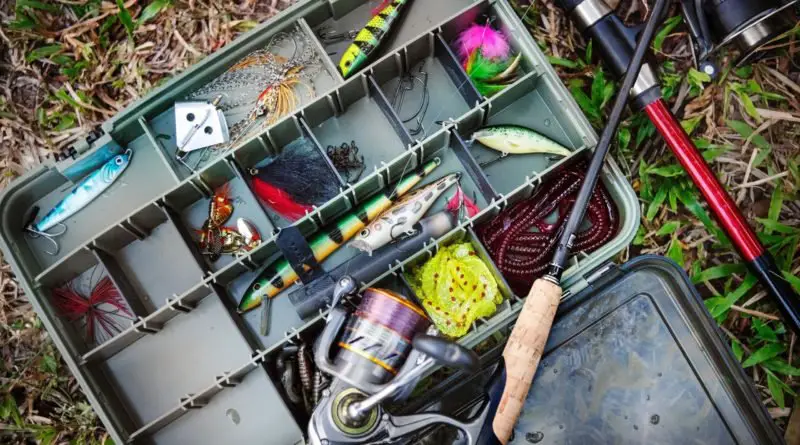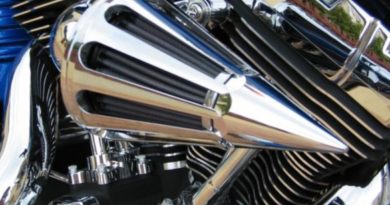Last modified on July 6th, 2020 at 11:07 pm
Fishing for Beginners: Everything You Need To Get Started
Fishing dates back thousands of years, but the sport is still extremely popular today. While some fish for food and other fish for fun, many avid fishermen grew up fishing. If you’re new to fishing, however, now is a great time to join in on the fun. It’s that perfect outdoor activity that you can also spend with your family and children on a weekend off; kids and adults alike are sure to enjoy that experience. Plus, what a bonus it would be to experience eating something you’ve caught!
Learning how to fish takes time and practice, but it also requires some essential gear. You can’t go fishing without some basics like a rod, reel, and other fishing gear, whether you borrow it or purchase your own.
For those who are just starting out, we’ll break down the essential fishing gear you’ll need to start on your new activity. With this list, you can save yourself the trouble of buying too many things that you won’t even end up using.
Fishing License
Whether or not you need a license will depend on where you’re fishing. There are state laws, local laws, and often laws specific to each body of water that you must abide by, and many require a fishing license. Before you get out on the water, ensure that you have a valid fishing license, and check your state’s fishing laws so that you know the rules and regulations to follow.
If you’re going to another state, do review their fishing laws as well. The last thing that you’d want is for an innocent and enjoyable trip to have bumps, simply because you’re caught illegally fishing. At the very least, you may also want to start fishing in areas identified as fishing reserves or camping sites for tourists.
A bonus of knowing that you’re fishing in a location where you’re allowed to bring home the fish is that you can also keep these as pets. This is fun, especially for the smaller fish that your kids may have caught. For some ideas on beautiful fish to bring home, here are great fish ideas for a 5 gallon tank so you can build this aquarium for your home.
Fishing Rod
A fishing rod is one of the most basic necessities of fishing – it would certainly be hard to catch a fish without one. Depending on the type of fishing you plan to do, where you’re fishing, and what type of fish you plan to catch, there are different rods and factors to consider when you purchase one.
The first decision you should make when buying a fishing rod is whether you want to use a conventional casting rod or a spinning rod. Spinning rods are easier to master, so they are the more popular choice among young or beginner fishermen. Baitcasting rods are typically preferred by professionals, however. No matter what kind of rod you choose, research what length, action, and material is best for your style of fishing to get the best rod for you.
Fishing Reel
A fishing reel may not sounds as obviously essential as a fishing rod, but without a reel your rod is useless. Fishing reels are also divided by casting reels and spinning reels, so get the style that matches your fishing rod. Spinning reels, like rods, are typically easier to learn to use for beginners, read more at tacticalhuntr.com.
There are also fishing reels made specifically for surf fishing, ice fishing, fly fishing, or even specific to the type of fish or casting style of choice. Figure out what will work best for you and invest in a quality reel. Fishing reels can break fighting tough fish, so buy yourself a durable reel made of quality components that will last.
Fishing Line
Equally essential, fishing line is what your rod and reel will use to cast and retrieve fish. Fishing line may seem simple, but there are actually various types of lines and manufacturers, so there is plenty to consider when choosing a fishing line.
There are three main types of fishing lines: monofilament, braided line, and fluorocarbon. Monofilament is the classic fishing line with a little more give, the braided line tends to be stronger and more heavy duty, and fluorocarbon is a stronger line that is often used as a leader rather than a mainline. Each type of line also has factors to consider line strength, stretch, size, and more.
Tackle
Tackle is what goes on the end of your fishing line, attracting and then catching the fish. Tackle is a broad category that includes various items, including hooks, weights (also called sinkers), swivels, bobbers, and, of course, bait and lures.
Bait generally refers to live tackle, like minnows, shrimp, worms, or other baitfish. Lures are artificial and mimic real baitfish, but can be reused. Both work well, and most anglers use both live bait and artificial lures. There are seemingly endless types of lures and bait you can use, so research what works best for your location, season, and species.
Pliers, Scissors, a Knife
There are some more basic tools that you’ll also need as a fisherman. One such item is pliers – ideally needle-nose pliers. These are used to pull the hooks out of fish’s mouths when they are caught. Using your fingers is not safe, as you could cut your hand on the hook or the fish’s sharp teeth.
Aside from the pliers, most anglers have scissors, a knife, or both on hand for cutting line. A knife can also be used to fillet the fish if you plan to keep it. Many fishermen invest in a multi-tool that can consist of pliers, a knife, scissors, and more.
A Cooler
If you’re fishing for keeps, you’ll need a cooler to store fish to take home. You may also need a cooler for keeping bait cold and aerated. Invest in a nice cooler that will last, and store it with your best catches.
Even if you plan to catch and release, you may want to pack a cooler for yourself. It’s important to stay hydrated when spending long days in the sun, so pack clean water. If you’re fishing for a full day, pack a lunch or snacks as well.
First Aid Supplies
Fishing is fun, but it can be dangerous. When you’re out there in the lake or great big sea for your fishing adventure, you’re far away from the comforts and safety of land. If an accident does happen on board the fishing boat, you need to be able to do the necessary first aid before reaching land to stop the injury from getting worst. These can range anywhere from small cuts to stings, and even to more severe injuries.
Be sure to pack a first aid kit with at least the most basic supplies in case of an injury. As mentioned above, you should also pack clean water and make sure everyone stays hydrated, especially on hot days. This clean water will also come in handy in case you’ve got to clean off any wound that may happen while onboard.
In addition to staying hydrated, it is important to stay safe from the sun’s harmful UV rays. Even on overcast or cloudy days, you can get a sunburn. Pack sunscreen SPF 15 or higher, and wear a hat and sunglasses to keep the sun off of your face. Remember that staying safe from the harmful UV rays is more than just a vanity thing. Overexposure to the sun can also cause permanent damage to your skin, which leads to skin cancer.
Conclusion
Fishing is a fun activity to immerse yourself in. But, as a beginner, you’ll be faced with the confusion as to how to get started. While enjoyable, it can also be expensive to complete all of the equipment that you’re going to need. This fact is precisely why this article gives you a list of the basics. Since you’re still trying to get the hang and the feel of it, don’t feel too pressured to immediately purchase everything that you’ll find in stores. Even with these basics, you can already enjoy a fun and safe fishing trip.




